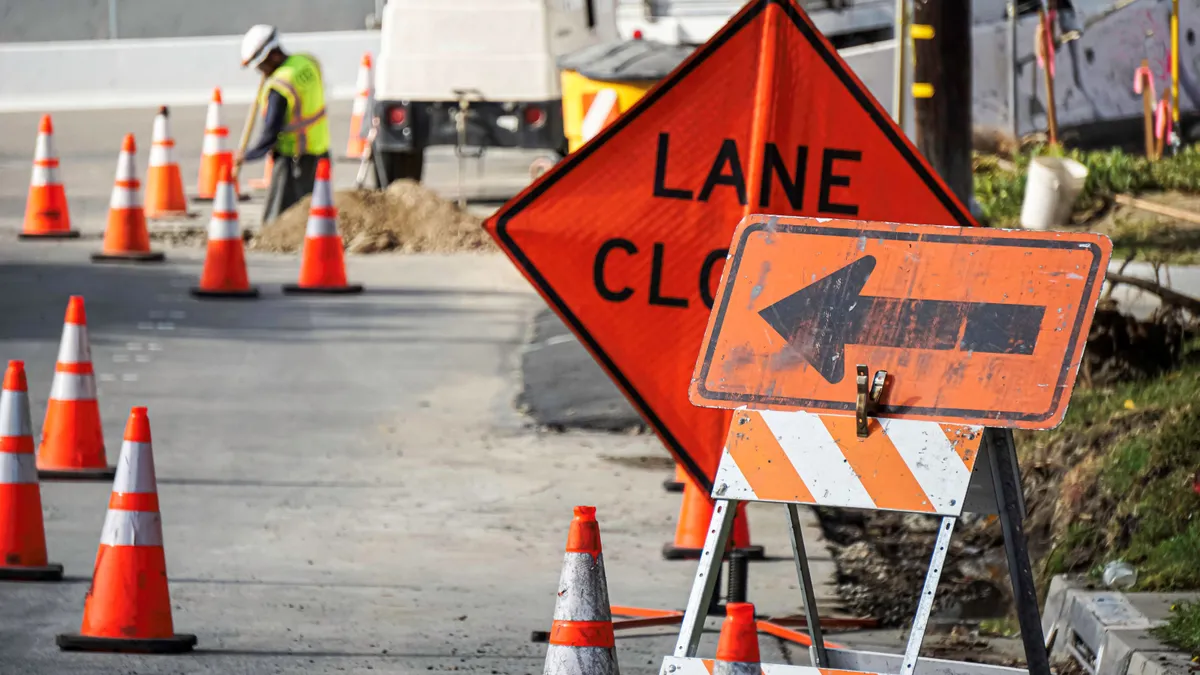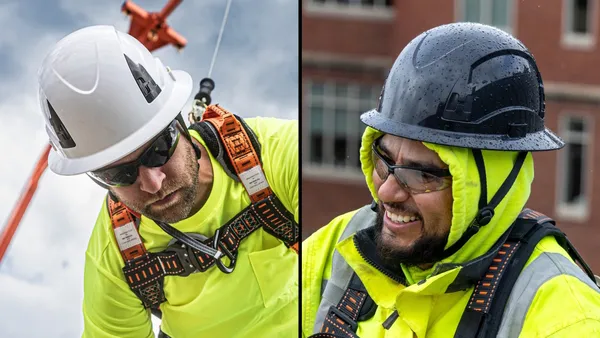Dive Brief:
- The Biden-Harris administration has made the first update to highway work zone safety rule in 20 years, the Federal Highway Administration announced Nov. 5.
- The changes, which will go into effect Dec. 2, seek to decrease the likelihood of work zone fatalities for workers and motorists by establishing minimum requirements and providing guidance for the use of protection devices such as concrete barriers.
- The updates also provide guidance on the installation and maintenance of temporary traffic control devices, use of uniformed law enforcement during construction and utility operations and a new requirement of contract pay items ensuring the availability of funds for those provisions.
Dive Insight:
Per the change, at a minimum state DOTs must use positive protection devices in work zones:
- With high anticipated speeds (45 mph or faster) or high traffic volumes.
- Where workers have no direct means of escaping motorized traffic.
- Where workers will face substantial exposure to motorized traffic (a work zone existing for two weeks or more).
The rule also will require state DOTs to perform a work zone programmatic review every five years and share the results with the FHWA by the end of the five-year period. The review must include a representative sample of the state’s significant work zones in the time period.
The new regulations are meant to improve safety for roadway workers as well as motorists that drive through work zones.
Nearly two thirds of highway contractors have experienced a crash on their jobsites, according to an Associated General Contractors of America survey.
Although highway workers often face danger, reckless driving more often kills vehicle occupants. Four out of five work zone fatalities involved drivers or their passengers, per FHWA data.
Protections like concrete barriers can be expensive. A contractor hoping to win a project in a low bid environment may be beaten by a competitor who chooses to forego the safeguard, said Brian Turmail, vice president of public affairs and workforce for AGC.
The AGC submitted comments for the proposed rule in September in support of deployment of positive protection devices as well as the requirement for contracts ensuring the availability of funds to pay for those protections, effectively removing the competitive advantage for firms that skimp on safeguards.
The AGC’s comments call the rule “a very positive step,” but Turmail said the group still thinks more can be done to encourage motorists to reduce speeds in work zones, such as tougher penalties for moving violations in highway work zones, more consistent enforcement and improved safety education for drivers.














